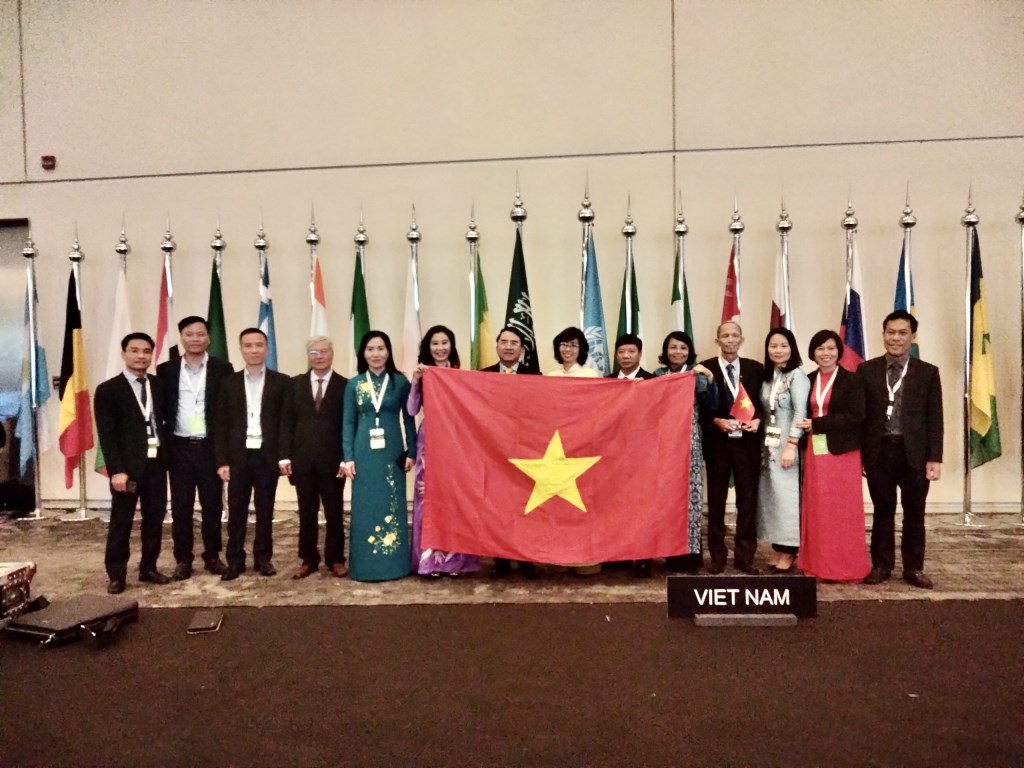 |
| The Vietnamese delegation attended the 45th Session of the World Heritage Committee held in Riyadh, Saudi Arabia. |
Ha Long Bay was recognized by UNESCO as a World Natural Heritage twice in 1994 and 2000 according to criteria (vii) and (viii). In 2013, the nomination dossier for Cat Ba Archipelago as a World Natural Heritage according to the criteria of biodiversity and ecosystems (criteria ix and x) was sent to the World Heritage Centre. After the assessment process, the World Conservation Union (IUCN) drafted Decision No. WHC-14/38.COM/INF.8B for the World Heritage Committee to adopt at its 38th Session in Qatar in 2014, in which it recommended: “The State Party considers the possibility of proposing an extension to Ha Long Bay, according to criteria (vii) and (viii) and possibly criterion (x), to include the Cat Ba Archipelago”. Since then, the implementation of conservation activities and research to develop a dossier for nomination of Ha Long Bay - Cat Ba Archipelago as a world heritage site has continued to be promoted. In September 2016, based on proposals from localities and advice from the Ministry of Culture, Sports and Tourism, the Prime Minister agreed to allow Hai Phong City to preside over and coordinate with Quang Ninh Province to develop a dossier to expand Ha Long Bay to Cat Ba Archipelago for submission to the Prime Minister for consideration and approval to UNESCO; at the same time, the Ministry of Culture, Sports and Tourism was assigned to guide Hai Phong City in developing a dossier for Ha Long Bay - Cat Ba Archipelago as a world natural heritage site in accordance with the provisions of the law on cultural heritage and related regulations. The process of developing the dossier also encountered many difficulties, with recommendations and comments from UNESCO and IUCN. However, with the spirit and responsibility of the specialized agencies of the Ministry of Culture, Sports and Tourism, the determination of Hai Phong city, Quang Ninh province, and the Vietnam National Commission for UNESCO, in early 2021, the dossier of Ha Long Bay - Cat Ba Archipelago was revised and completed according to the recommended content. Accordingly, the People's Committee of Hai Phong city and the People's Committee of Quang Ninh province agreed to issue a document requesting the Ministry of Culture, Sports and Tourism and the National Cultural Heritage Council to appraise and submit to the Prime Minister for permission to send to UNESCO for inclusion in the World Heritage List. Through the appraisal process, in January 2021, the Ministry of Culture, Sports and Tourism reported and received the Prime Minister's approval for the Minister of Culture, Sports and Tourism to sign the dossier nominating Ha Long Bay - Cat Ba Archipelago and assign the Vietnam National Commission for UNESCO to preside over and send the dossier to UNESCO within the prescribed time limit. Participating in the 45th Session of the World Heritage Committee taking place in Riyadh, Kingdom of Saudi Arabia from September 10, 2023, the Vietnamese delegation was led by Associate Professor, Dr. Le Thi Thu Hien - Director of the Department of Cultural Heritage (Ministry of Culture, Sports and Tourism), Standing Member of the National Cultural Heritage Council, and the participation of Ambassador Le Thi Hong Van - Head of the Permanent Delegation of Vietnam to UNESCO in France, representing the Secretariat of the Vietnam National Commission for UNESCO/Ministry
of Foreign Affairs . On the local side, there were Mr. Le Khac Nam, Vice Chairman of Hai Phong City People's Committee, Ms. Nguyen Thi Hanh, Vice Chairman of Quang Ninh Provincial People's Committee, representatives of a number of Departments of Culture, Departments of Foreign Affairs, World Heritage Management Boards/Centers in Vietnam, and Cat Hai district. During the working program at the 45th Session of the World Heritage Committee, the delegation of the Ministry of Culture, Sports and Tourism together with the Ambassador, Head of the Permanent Delegation of Vietnam to UNESCO in France and the two localities of Hai Phong city and Quang Ninh province worked with UNESCO's specialized agencies, the Director of the World Heritage Center, the General Director of ICOMOS, the Director of the IUCN World Heritage Program, the Head of the Nomination Department of the World Heritage Center, and 21 member countries of the World Heritage Committee to provide information, explain, clarify, express Vietnam's views and commitments in managing, protecting and promoting the value of the heritage after it was inscribed on the World Heritage List. Thereby, international experts, scientists and member countries of the World Heritage Committee all highly appreciated the value of the heritage, thereby supporting Ha Long Bay - Cat Ba Archipelago to become a World Natural Heritage, and at the same time wished to visit the heritage in the near future. Ha Long Bay - Cat Ba Archipelago is a UNESCO World Heritage Site, containing areas of natural beauty including vegetation-covered limestone islands and limestone pinnacles rising above the sea, along with associated karst features such as domes and caves. The spectacular untouched landscape of vegetation-covered islands, saltwater lakes, limestone pinnacles with steep cliffs rising above the sea. With 1,133 limestone islands of various shapes and sizes (775 limestone islands in Ha Long Bay and 358 limestone islands in Cat Ba Archipelago) covered with rich vegetation on sparkling emerald waters, Ha Long Bay - Cat Ba Archipelago appears like a chessboard of precious stones; peaceful, overlapping mountains and rivers; pristine, fine white sand beaches.
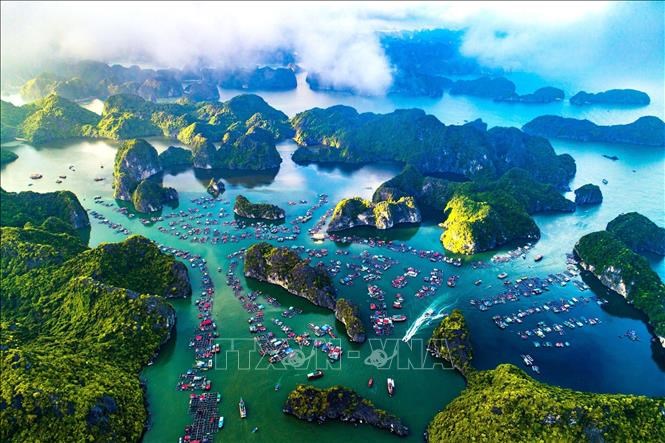 |
| Cat Ba archipelago seen from above. Photo: VNA |
Ha Long Bay - Cat Ba Archipelago is considered a geological museum, containing heritages of outstanding global value, witnessing the characteristic changes in the history of the development of the Earth. The Ha Long - Cat Ba sea area includes many terrigenous and carbonate sedimentary systems, ranging in age from the Paleozoic to the Cenozoic. Many sedimentary systems in this area contain paleontological traces in various fossil forms, including groups of flora and fauna that have become extinct or nearly extinct on Earth. The presence of primeval forests, bays and islands in the bay are unique evidence of the continuous movement and development of karst landforms, fengcong (cone-shaped peak clusters) and fenglin (isolated tower features) systems formed over millions of years in tropical, humid conditions, progressing greatly from high mountain ranges down to the sea, where the karst terrain finally reaches its basic erosion level. With the intersection of mountains, forests and islands, Ha Long Bay - Cat Ba Archipelago is a typical area with a high level of diversity in Asia, possessing 7 adjacent, successively developing tropical and subtropical marine - island ecosystems, including: primary tropical rainforest ecosystem; cave ecosystem; mangrove forest ecosystem; tidal flat ecosystem; coral reef ecosystem; soft bottom ecosystem; saltwater lake ecosystem. These ecosystems represent ecological and biological processes that are still evolving and developing, reflected in the diversity of flora and fauna communities. Ha Long Bay - Cat Ba Archipelago is also home to many rare species of flora and fauna. Possessing the largest marine forest in Vietnam with an area of over 17,000 hectares and diverse ecosystems, Ha Long Bay - Cat Ba Archipelago is home to 4,910 species of terrestrial and marine flora and fauna, of which 198 are listed in the IUCN Red List, 51 are endemic. The area of primary forest of about 1,045.2 hectares on Cat Ba Island is one of the important factors contributing to the ecological value and biodiversity of the heritage. In particular, the Cat Ba langur (Trachypithecus poliocephalus) is a rare species, on the list of animals at highest risk of extinction and listed in the World Red Book. To date, there are about 60-70 individuals distributed only in Cat Ba, this species appears nowhere else in the world. There are many endemic plant species here, adapted to living only on limestone islands, that are found nowhere else in the world, such as: Ha Long cycad (Cycas tropophylla), Chirita drakei, Ha Long palm (Livistona halongensis), Ha Long ear nail (Impatiens verrucifera), Ha Long ivy (schefflera alongensis), yellow-flowered lady's slipper (Paphiopedilum concolor)... Succulent or rough-leaved plants such as Euphorbia antiquorum (Euphorb.) cactus, Dracaena cambodiana (Liliac.), Cycas sp. (Cycad.), and leafless vine Sarcostemma acidum (Apocyn.) give the vegetation here a drought-resistant appearance of desert plants. Ha Long Bay - Cat Ba Archipelago was recognized by UNESCO at the 45th Session of the World Heritage Committee (September 2023), becoming the first inter-provincial and municipal World Heritage Site in Vietnam, which is a useful lesson in combining management, protection and promotion of the value of World Heritage in particular, historical - cultural relics, and scenic spots in general in Vietnam in the coming years./.
Source: https://dangcongsan.vn/tu-tuong-van-hoa/vinh-ha-long-quan-dao-cat-ba-duoc-cong-nhan-la-di-san-thien-nhien-the-gioi-646985.html




![[Photo] Readers line up to visit the photo exhibition and receive a special publication commemorating the 135th birthday of President Ho Chi Minh at Nhan Dan Newspaper](https://vphoto.vietnam.vn/thumb/1200x675/vietnam/resource/IMAGE/2025/5/17/85b3197fc6bd43e6a9ee4db15101005b)
![[Photo] Prime Minister Pham Minh Chinh chairs meeting on science and technology development](https://vphoto.vietnam.vn/thumb/1200x675/vietnam/resource/IMAGE/2025/5/17/ae80dd74c384439789b12013c738a045)
![[Photo] More than 17,000 candidates participate in the 2025 SPT Competency Assessment Test of Hanoi National University of Education](https://vphoto.vietnam.vn/thumb/1200x675/vietnam/resource/IMAGE/2025/5/17/e538d9a1636c407cbb211b314e6303fd)
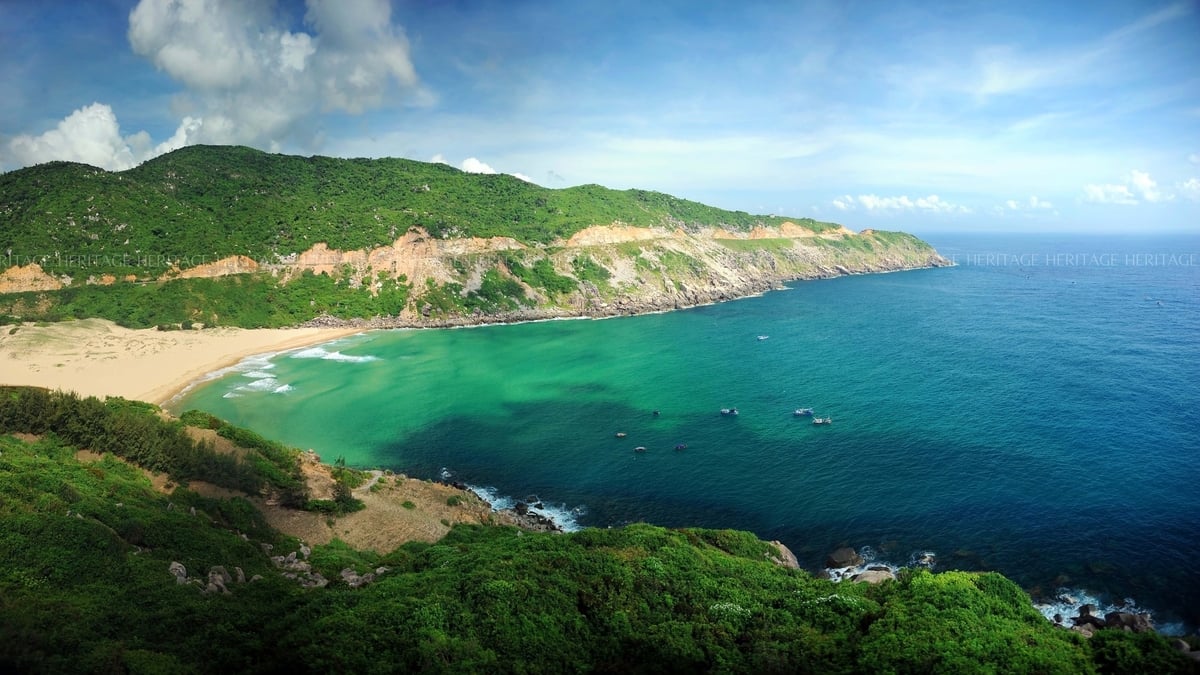
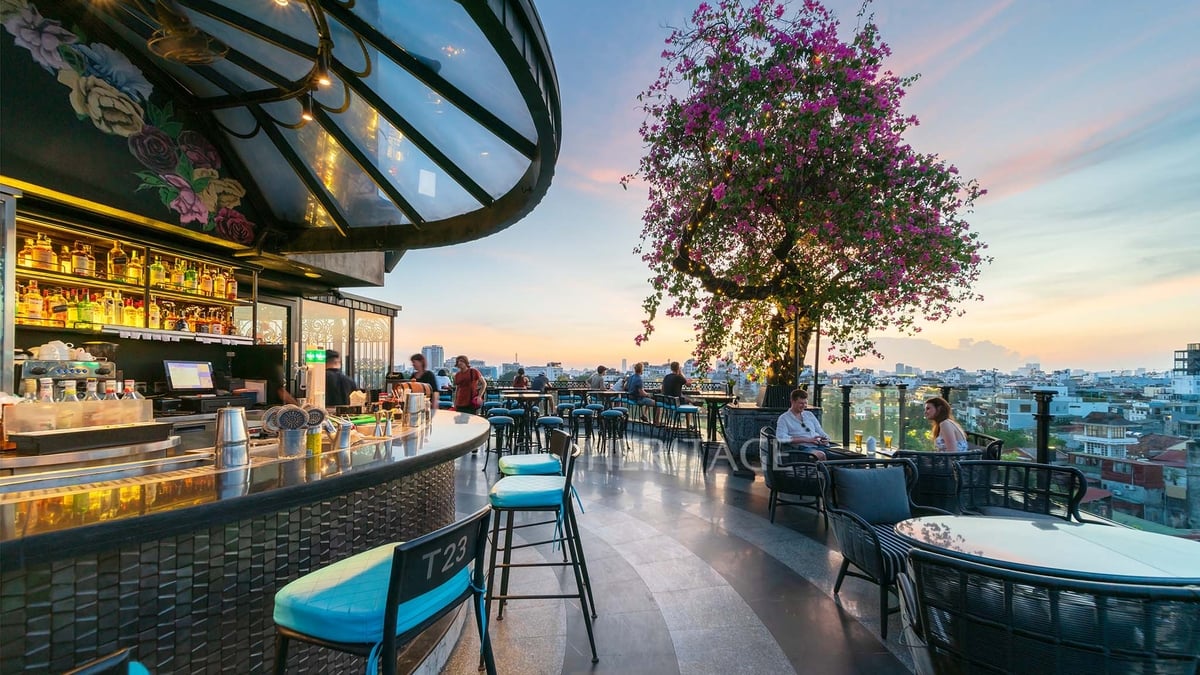

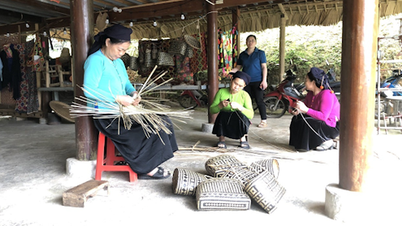

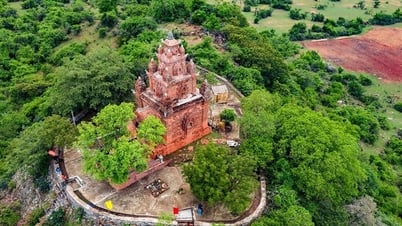

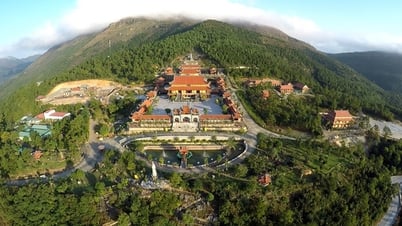

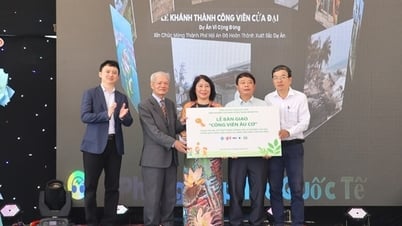

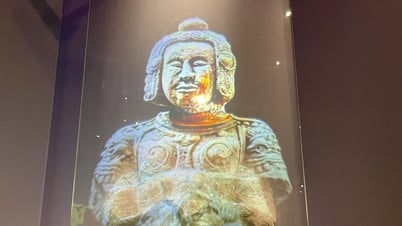













![[Photo] Nearly 3,000 students moved by stories about soldiers](https://vphoto.vietnam.vn/thumb/1200x675/vietnam/resource/IMAGE/2025/5/17/21da57c8241e42438b423eaa37215e0e)
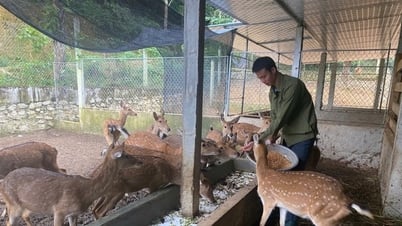












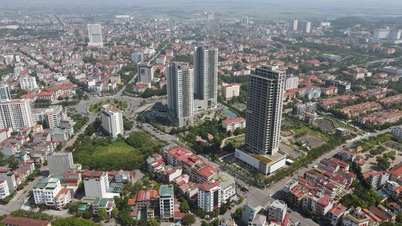



















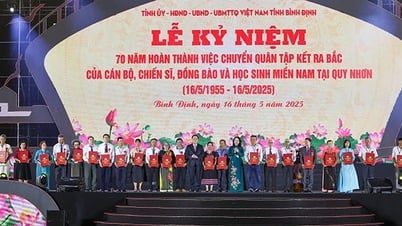


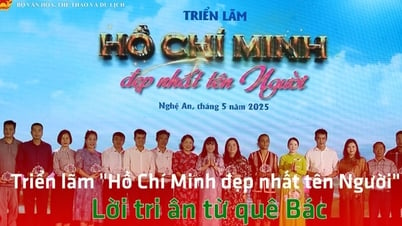








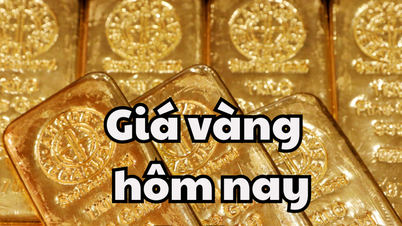
















Comment (0)